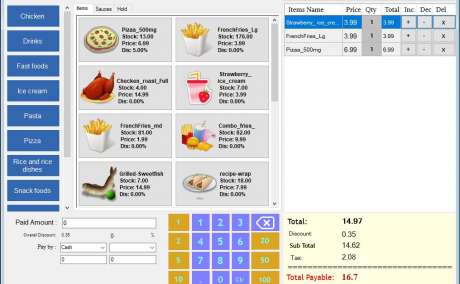
Description
Transitioning to outsourced AP is more than a handoff it’
Outsourcing accounts payable (AP) is no longer a cost-saving tactic it’s a strategic move embraced by modern CFOs to drive operational efficiency, improve compliance, and unlock scalability. But success doesn’t just depend on selecting the right outsourcing provider it hinges on how effectively your business manages the transition. Whether you're a mid-market enterprise or scaling organization, a smooth AP outsourcing transition requires structured planning, strong communication, and process alignment. Here’s how to ensure a successful shift from in-house AP operations to a high-performing outsourced solution.
Before diving into implementation, clearly define your business objectives. Ask:
Are we trying to reduce invoice processing costs?
Do we need better visibility into spend?
Are we struggling with delayed payments or manual errors?
Are compliance and data security concerns driving this move?
Understanding your “why” helps you set measurable goals and select the right outsourcing partner who can align with your strategic vision.
Choosing a vendor is about more than capabilities. Look for a provider that offers:
Cloud-based automation tools
SOC 2 / ISO 27001 compliance for data security
AI-driven invoice matching and approvals
Real-time dashboards and analytics
Experience in your industry or ERP ecosystem
Request case studies, client references, and SLA commitments before making your final decision.
A successful AP outsourcing transition requires a step-by-step roadmap, which should include:
Kickoff meetings with your internal team and the provider
A clear timeline with key milestones (onboarding, testing, go-live)
Resource allocation—identify internal stakeholders and point persons
A communication plan across departments and vendors
Contingency planning for any disruptions
Make sure both your team and the provider are aligned on expectations, responsibilities, and escalation protocols.
Before handing off your AP function, document and evaluate your current workflows:
Invoice receipt and matching process
Approval hierarchies and thresholds
Payment scheduling
Dispute handling and exceptions
This is your chance to eliminate inefficiencies, standardize approvals, and digitize paper-based steps. Don’t “lift and shift” inefficient processes—optimize before outsourcing.
Accurate and secure data migration is essential. Coordinate with IT and your AP partner to:
Cleanse and standardize vendor master data
Map ERP fields to the provider’s system
Ensure invoice history, payment terms, and contract details are accessible
Conduct test runs before going live
A successful integration also means enabling real-time data sync between your ERP and the outsourced AP platform for full visibility and control.
An overlooked step in many transitions is training. Prepare your finance team by educating them on:
New workflows and approval tools
Dashboard access and reporting
Escalation and issue resolution
Also, notify and onboard vendors about the new submission process, payment timelines, and contact points. A positive vendor experience supports faster adoption and fewer disruptions.
After go-live, monitor performance closely in the first 60–90 days. Track metrics such as:
Invoice turnaround time
On-time payments
Error rates or exceptions
Vendor satisfaction
SLA compliance
Hold regular check-ins with your provider to discuss pain points, suggest improvements, and share feedback.
Remember, a successful outsourcing transition is iterative. The first version won’t be perfect—what matters is your ability to adapt and optimize.
Outsourcing doesn’t mean losing control. Establish governance practices such as:
Quarterly business reviews (QBRs)
Real-time reporting dashboards
Internal compliance audits
Clear escalation and issue resolution paths
You should retain ownership over strategy, policy, and vendor relationships while the provider manages execution.
Transitioning to outsourced AP is more than a handoff it’s a transformation. When done right, it enables your finance team to shift from tactical processing to strategic impact. With a clear plan, the right partner, and empowered internal teams, your business can unlock faster invoice cycles, lower costs, improved accuracy, and long-term scalability.

Reviews
To write a review, you must login first.
From the Same Seller